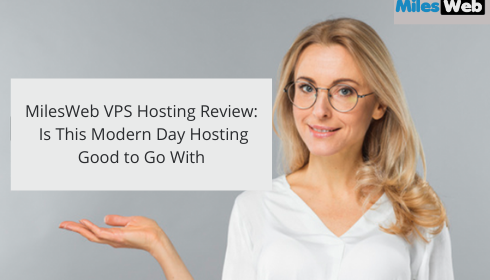6 Best Tips for Cloud Migration Strategy

While cloud adoption has turned into a basic piece of any business looking to stay aware of the global shift towards digitization, cloud migration does not come without threats. A cloud migration strategy can help organizations ensure moving digital resources—avoiding loss of information, sudden overhead, security breaches, and guaranteeing business continuity.
Before cloud computing, associations facilitated their advantages in on-premise data centers that gave the association boosted adaptability and security controls. While, when cloud services developed to their modern model like ipad website development and began offering customized, adaptable and financially effective solutions, associations quit the on-premise model for the cloud.
These days more than 90 percent of CIOs, around the world, are moving digital resources, for example, information and applications to a cloud environment. CIOs regularly fabricate a cloud migration strategy to help the cloud migration process. A cloud migration system guarantees the protection of migrating digital resources which rank among the most significant assets of an association and the fruitful adoption of the cloud by staff.
If your association is looking to modernize mission-basic applications and you’re planning a cloud migration as a major aspect of this procedure, you would prefer not to repeat others’ mistakes.
1.Implement the cloud strategies as required
Cloud migration affects all parts of your business. A strong cloud migration strategy should address the business, specialized, and human parts of the migration to guarantee a balanced implementation for long term. Make sure to check out AWS instance pricing before you start the migration over so you can ensure the total cost will be cheaper for you. Then you can apply any of the accompanying techniques and incorporate them suitably to answer the needs of your business:
• Rehosting– also known as the “lift and shift” strategy—enables associations to actualize a fast cloud migration. Some CSPs offer manual rehosting migration while others give programmed migration.
• Replatform– also known as the “lift, thinker, and shift” strategy—includes streamlining into the “lift and move” system. The “thinker” component identifies with advancing a couple of parts of the application while leaving the center architecture the equivalent.
• Repurchase– also known as the “drop and shop” strategy—encourages associations to shift specific in-house digital work processes to the cloud. This system offers associations the capacity to scale on a shift and budget to further developed services.
•Refactoring, also known as the “re-architecting” procedure—enables associations to reuse an ineffectual application and repurpose to meet new business needs. This test in refactoring is the complexity of configuring the code disturbing external procedures of the application.
• Resigning — during the discovery stage, an association may locate that a portion of their resources are never again helpful. For this situation, the application is turned-off to spare space, expenses, and time.
• Retaining — if you found applications you need to refactor however don’t have the resources now, you can hold it for future. Any application you would prefer not to retire, but the functioning can be retained. This procedure enables associations to migrate just operating resources.
2. Assess the cost of license management in advance
Associations frequently use software license management tools and procedures to deal with the area and utilization of their software products and guarantee consistence with software licenses. Before migrating, ensure your license empowers cloud migration. You may need to change the license to cover cloud situations, or find that your CSP offer host level license for the operating system. Decide ahead of time whether you need to bring your very own license (BYOL) or utilize the pay per-use licenses offered by the CSP or commercial center.
3. Adopt a phased migration strategy
It can be very difficult to migrate substantial legacy applications, so you can do it in augmentations. The most complete migration strategy is re-architecting, or refactoring, which is testing since it includes modifying your whole application environment. In any case, this methodology is eventually the most compensating as it enables you to build highlights to fit your application prerequisites, and can help improve developer agility.
A simpler procedure you can utilize meanwhile is rehosting, which includes sending your application through a managed service provider or a local hosting service. This enables you to migrate your application rapidly while limiting the effect on your application’s usefulness. The host gives your maintenance and infrastructure needs so you don’t need to play out the more complex migration aspects.
4. Manage and identify your components
When migrating to the cloud, you have to monitor all your assets, including applications and software components. developers regularly utilize open source parts to save money and time, however they can undoubtedly lose visibility and disregard the maintenance of these assets. This can bring about an inability to update and resolve vulnerabilities.
Run a revelation to distinguish open source segments or legacy software so you can monitor them in a stock. You would then be able to figure out which parts you need to move to the cloud, and which you can take out to lessen your migration impression. You can easily replace certain architecture segments on the cloud. Static code analysis can likewise help in this task.
5. Secure your cloud
Together with re-engineering your application, you should re-engineer your way to deal with security. A transition to public cloud frequently adds to the agility of DevOps procedure and expands frequency of releases. Cloud security system should incorporate great comprehension of how to incorporate security into the DevOps procedure and guarantee the security of the APIs between the individual parts of your application just as interfaces between the cloud itself, your data and your payloads.
Verifying your access points and constraining qualifications is likewise significant, as compromised certifications can open your entire infrastructure to being undermined by a hacker. Try not to make an access key for your root account except if it is vital.
6. Prepare a maintenance plan
Outsourcing your software and hardware maintenance needs to a cloud provider decreases your management load, however it doesn’t mean you can essentially receive a cloud solution and forget about it altogether. You should allocate funds and time for ongoing management. You should likewise guarantee that you can scale ability to react to request or switch providers when important. This requires an ongoing assessment of your changing needs and providing client alerts.
While the cloud offers associations numerous advantages, cloud migration is a procedure that should not be taken lightly. A customized cloud migration methodology can enable associations to migrate the difficulties and threats related with migrating to the cloud, for example, data loss, overheads because of unplanned costs, and security threats.
Subscribe & Get E-Mail Updates Delivered
Our informative Design related articles featuring the latest Resources for Web Designers & the Web get delivered via email dialy. Thousands of readers have signed up already. Why don't you subscribe as well, and get articles delivered to your inbox?






Leave a Reply